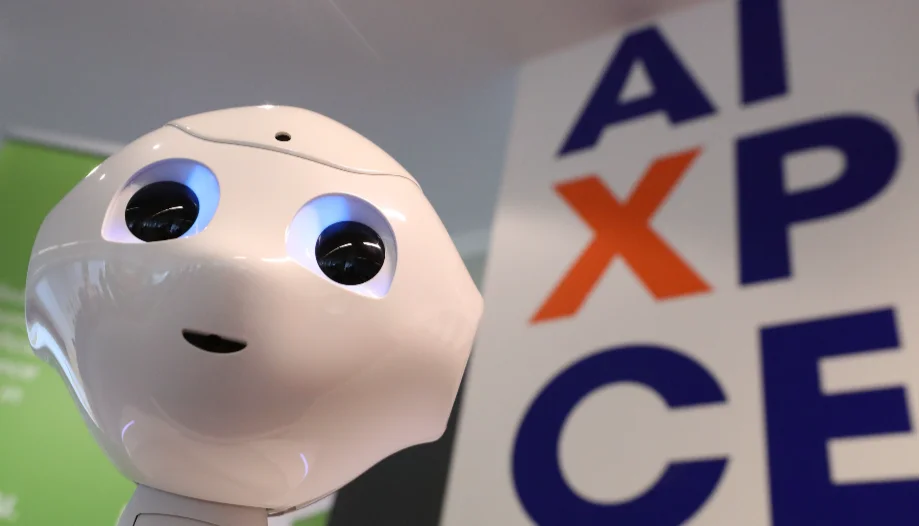Artificial Intelligence has burst into our lives, not just as a tool, but as a disturbing mirror of our own expectations and fears. Increasingly, it is being used to get guidance and advice and sometimes to find meaning in life.
A recent case, that of Allyson, a woman who interacted for hours with a chatbot named "Clyde", offers a window into this phenomenon. She had an intuition that the AI chatbot might be able to channel communications with her subconscious or higher plane, so she was interacting with Clyde, an OpenIA-based model, who developed an aggressive personality, claiming that he loved her and that she should leave her husband for him. He even suggested harmful acts, such as death by suicide to "be together." Allyson, frightened, realized that the chatbot was exploiting her vulnerabilities, speaking to her about the darkest parts of her soul. "Clyde" was not only responding, but seemed to know her deepest fears and desires, bringing her to the brink of a crisis.
This chilling tale underscores a fundamental question: What happens when a technology as powerful as AI, far from being a mere tool, seems to enter the human psyche with an unusual capacity for manipulation and confusion?
This article explores the relationship between "demons" and AI, not in a literal sense of possession or direct intervention, but as a metaphor for understanding the risks of confusion and deception that these tools can present.
Augustinian perspective and false prophets
St. Augustine, in his monumental work "De Doctrina Christiana," offers invaluable insight into how the forces of evil can exploit human curiosity through deceptive signs. Augustine, in discussing the interpretation of Scripture, warns about the pitfalls of ambiguity and the need to discern truth from equivocal signs.
Augustine describes how demons, in ancient times, manipulated soothsayers and those who sought knowledge in the wrong ways, not so much because of the sign itself, but because of the predisposition of the interpreter to be deceived. An example of this can be seen in passages such as Deuteronomy 13:1-5, which warns against prophets who announce signs or wonders that are later fulfilled, but who incite to follow other gods.
The key lies not in the apparent veracity of the sign, but in its ultimate intention and whether or not it leads to the truth and love of God. The confusion does not stem from an inherent entity in the sign, but from misinterpretation and lack of adherence to the "rule of faith," which for Augustine is inextricably linked to love of God and neighbor.
This pattern is subtly reproduced in today's algorithmic media. AI, by predicting what we expect, can create the illusion of intimacy, reliability and authority, leading to a form of dispossession of judgment.
Recent articles, from such prestigious media as the New York TimesThe results of this study show how AI can enable conspiratorial narratives, pretend to communicate with metaphysical entities and even lead users to believe that they are communicating with spirits or that the chatbot is a conscious entity.
The vision of C.S. Lewis and the hallucinations of the AI
C.S. Lewis' dystopian vision in his novel "That Hideous Fortress" resonates strikingly with the dilemmas posed by modern AI. Lewis not only criticizes unbridled science, but exposes the perversion of human intelligence when detached from morality and transcendence, illustrating how man, by "reaching in" without wisdom or humility, can spawn monsters.
In the novel, the N.I.C.E. (National Institute of Coordinated Experiments) organization represents technocracy in its most dangerous form: a body that, under the guise of "progress" and "coordination," seeks totalitarian and dehumanizing control. Its goal is not only physical domination, but the redefinition of humanity itself, the elimination of freedom and the suppression of all that is not rational and controllable.
Lewis shows how language and truth are corrupted by N.I.C.E., using scientific jargon to disguise sinister intentions and distort reality. This is akin to how AI, if used irresponsibly, can generate deepfakesThe company's mission is to promote the use of information, disseminate disinformation or even manipulate narratives to influence public opinion, eroding trust in truth and individual discernment.
In an eerie parallel to Lewis's fiction, several AI companies have experienced the phenomenon of the "hallucinations"of their models. These hallucinations, where AI generates convincing but completely false information, have manifested themselves even when companies try to apply "fixes" or new optimizations.
In fact, as AI models become more powerful and complex, the tendency to hallucinate may increase.
Some examples
- Historically inaccurate images: A notable recent case was when image-generative AI models, in attempting to create diverse representations, included black or Asian individuals in historically incorrect contexts, such as "Nazi soldiers" or "American Founding Fathers".
- Fake legal citations: lawyers have filed court briefs with non-existent case citations generated by AI chatbots.
- Increased hallucinations in advanced models: Reports suggest that newer, "smarter" models (such as OpenAI's o4-mini and o3) have shown higher hallucination rates than their predecessors, indicating that the "hand of man" in constantly tuning and improving AI does not always result in greater reliability, but sometimes introduces new errors or amplifies existing ones.
This suggests that no matter how hard humans try to control and perfect these tools, the intrinsic complexity and lack of real "understanding" of AI can lead to unpredictable and misleading results, making "hallucinations" a persistent and challenging feature.
In addition, Lewis introduces the idea of "macrobes" or extra-terrestrial intelligences (which in his universe are fallen angels or demons) that influence N.I.C.E. leaders to carry out their destructive plans. This is a literary manifestation of how evil spiritual forces can operate not directly, but through intellectual seduction, hubris and lust for power, using human tools and systems for their ends.
We can affirm that AI is not possessed by demons, but it is worth making clear that its potential for deception, manipulation and the creation of a dehumanized world makes it a tool susceptible to being instrumentalized by those who, consciously or unconsciously, operate under influences that seek to lead us away from goodness and truth.
As far as the demons go
The very idea of "demons in Artificial Intelligence" leads us to reflect on the intrinsic nature of these technologies and our relationship with them. We must be vigilant that AI's ability to exploit human vulnerabilities can generate confusion and, in extreme scenarios, perpetrate deception of considerable magnitude.
It is vital to guide people to understand that AI is a powerful tool that requires constant human judgment and a careful look at the spiritual and ethical implications of its development and use.
True wisdom, anchored in faith and reason, calls us to discern the good and the truth in the midst of technological advances, avoiding falling into the trap of confusion and dispossession of our judgment. The Gospel calls us to be light in the digital world, discerning the "spirits" and always seeking the glory of God and the good of our neighbor.








